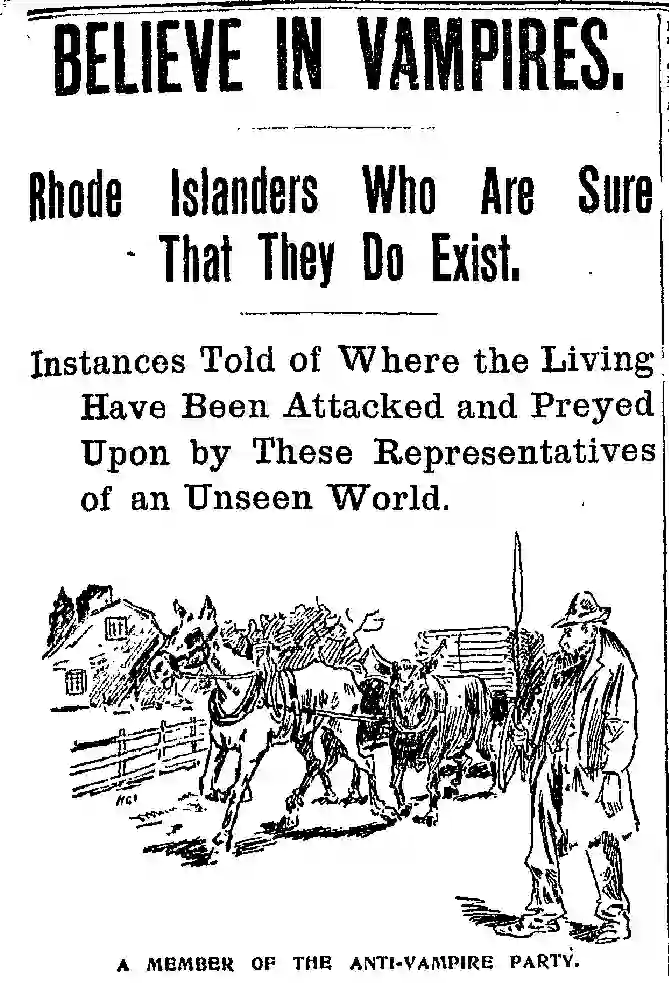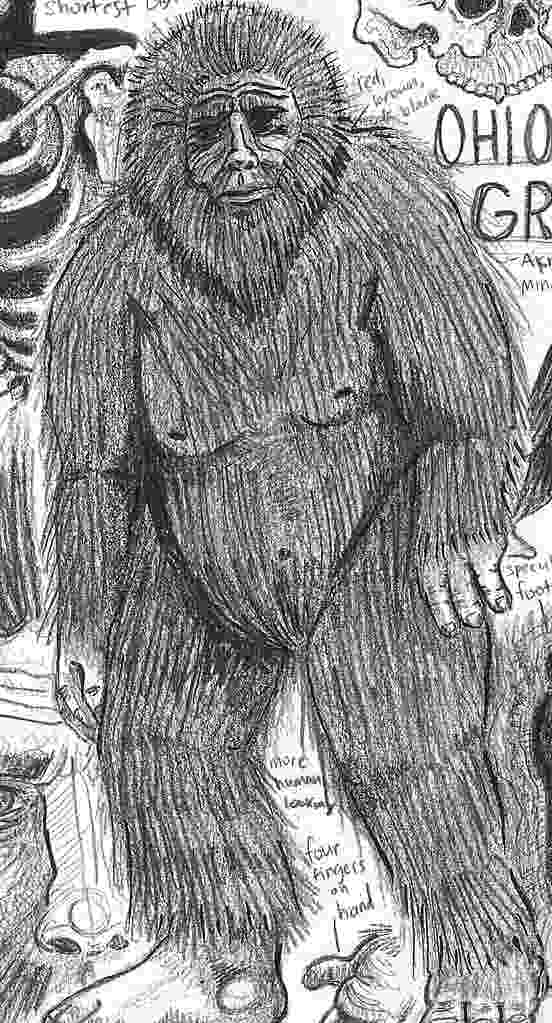Mercy Brown, The Rhode Island Vampire Lady
The final and most memorable episode in New England’s vampire hunt occurred at the end of the 19th century, when a girl named Mercy Brown died on January 19, 1892, and her body was unearthed on March 17, 1892.
Speculation fell on her as a suspected vampire, and excavating her coffin was an attempt to determine if she was a vampire. Her mother and sister had died of consumption before her, and when her brother Eddie contracted it, he had nightmares about Mercy. He also felt a heavy weight on his chest at night.
Relatives and neighbors of the Brown family farm claimed it was the work of a vampire, with one of the browns rising from the grave and taking the lives of the living brown.
The mystery ailment that spread through George Brown’s family was most likely Tuberculosis.
Nonetheless, Rhode Island became renowned as the “Vampire Capital of America.” Mercy Brown is the last known Vampire from America.

The Beginnings of Vampire Stories in New England
The year is 1810, and a terrible sickness is sweeping through New Hampshire. Locals are terrified since whole families have been wiped off in a matter of weeks, and physicians are at a loss on what to do.
The wasting disease is relentless, preying on the young and the elderly, transforming healthy people into walking corpses with sunken eyes and ashy skin.
While experts were quick to point out that this was only a medical ailment, the locals were dubious and flocked to the streets to “cure” the strange sickness in their own manner. For years to come, New England would be renowned as “America’s Vampire Capital.”
However, New England was not alone in its convictions. Around the same time, Europe was experiencing a similar vampire panic, with sightings of the undead all over the place.
Violent epidemics of TB and other lung infections were known as “consumption” in the nineteenth century. Medical personnel understood little about the sickness or how to stop it, but they did know it spread swiftly among individuals living in the same house, often with disastrous consequences.
One of those TB epidemics was undoubtedly responsible for the New England vampire scare. Throughout the nineteenth century, TB was the most lethal illness globally, accounting for around 25% of all fatalities in the population.
Doctors were ignorant that the sickness was airborne and spread primarily by coughing for over a century. Thus, there was little that could be done once someone became ill. So, what is the most prevalent treatment? A mix of prescription bloodletting and rest, neither of which contributed significantly to recovery.

The Mercy Brown Incident
In 1884, a farmer named George Brown, his wife Mary Eliza, and their three children – daughters Mary Olive, Mercy, and son Edwin – lived in Exeter, Rhode Island.
Mary Eliza was the first to get Tuberculosis. She was exhausted, experienced night sweats, coughed up mucus and blood, and died in agony.
Mary Olive, their eldest daughter, caught Tuberculosis two years after her mother died. She, too, died as a result of the sickness.
Even though their deaths were tragic for the Brown family, no one else became ill, so they considered themselves lucky to be well and living. However, Edwin fell gravely sick with TB in 1891.
Both relocated to Colorado Springs after learning that “better conditions” would aid in the disease’s eradication. When he returned a year later, he was initially healthier, but his condition quickly deteriorated.
When his son Edwin was near death, George and the townspeople resurrected the remains of the two Marys to see whether they were vampires preying on the family’s live members. But instead, they turned to Mercy’s body after discovering nothing but bones.
However, when Mercy’s casket was opened, it was discovered that her face was flushed, her veins and organs were full of blood, her body had moved, and her hair and nails had sprouted. They realized they’d found their “vampire” right away.
They continued to destroy her body, including extracting her heart, burning it on a nearby rock, and giving her brother Edwin a mixture, including the ashes, to “heal” him. But unfortunately, Edwin died not long after.
However, no one else in the Brown family appeared to be impacted after that.

Mercy Brown’s Tomb
Mercy Brown’s burial is still located at Chestnut Hill Cemetery, a small graveyard behind a modest, white Baptist church off Ten Rod Road, just a few miles from I-95.
Conclusion
Caitln R. Kiernan’s short tale “So Runs the World Away,” which references the Mercy Brown scandal, was inspired by the episode.
Scholars have also argued that Bram Stoker, the author of the novel Dracula, was aware of the Mercy Brown case through newspaper clippings and modeled the novel’s heroine Lucy Westenra on her.
New England’s Last Vampire While Mercy Brown lived a brief life, we might assume that her legend as the “Last New England Vampire” will continue through family stories.
Sources
https://www.sos.ri.gov/divisions/Civics-And-Education/state-library







